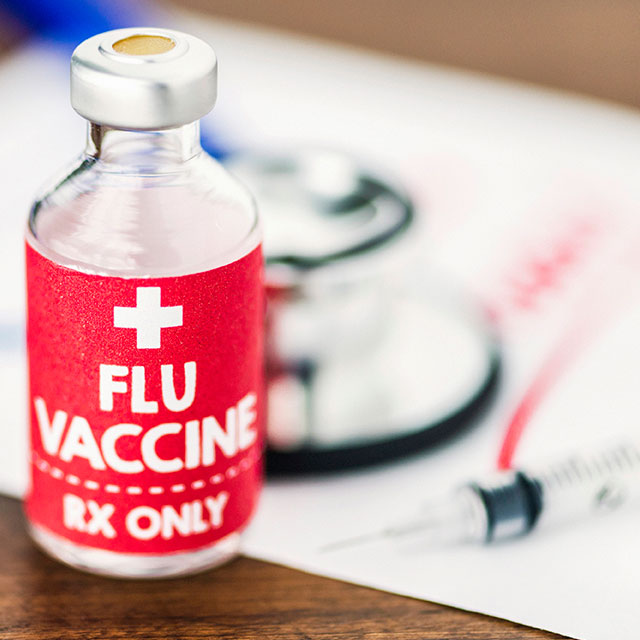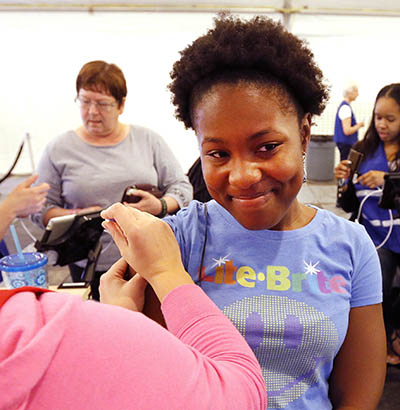From prevention to tried-and-true remedies and everything in between, here’s what you need to know to stay healthy during cold and flu season.
Fever, body aches, sniffles, sneezes, a cough that won’t quit: Cold and flu season brings with it a whole host of things we’d all rather avoid. For many, like infants, senior citizens and those with chronic health conditions, these symptoms aren’t just an inconvenience — they can be life-threatening, morphing into complications like pneumonia. Needless to say, it’s wise to be as prepared as possible when cold and flu season rolls around.
Here, you’ll find everything you need to know about cold and flu prevention, and what you and yours need to do if a flu diagnosis is made.
Prevention
The best strategy, of course, is to do everything you can to avoid cases of colds and flu altogether. By taking a few preventive measures, you’ll increase your odds of resisting these illnesses when peak season rolls around:
- Wash your hands often, and keep disinfectant cleanser at the ready to sanitize high-traffic areas like doorknobs, countertops, sinks, faucets and light switches.
- Get the flu shot! And make sure everyone in your circle — family members, caregivers, etc. — gets one, too. It’s particularly critical for pregnant moms, infants over 6 months old, children, seniors and those with chronic conditions. And no, you can’t get the flu from the vaccination.
- Viruses like the flu can be spread within a 6-foot radius, also known as “the breathing zone.” Prevent others from getting your illness by staying home.
Kids
Children are susceptible to catching colds and flu due to their weaker immune systems. Not to mention, they’re certified germ magnets. The CDC recommends that all children over 6 months of age get a flu shot every year; doing so lowers the risk of contracting the illness by 80 percent. If your children are still exposed to the virus, there’s less of a chance of complications like pneumonia if they’ve had their vaccinations.
- Keep your kiddos home if they have a fever over 100.4, vomit more than twice, have significant mucous production that causes breathing issues, or exhibit signs of strep throat (throat pain, fever, swollen glands, abdominal pain, rash). The general rule of thumb is they need to be fever/symptom-free for 24 hours before joining in on school and playgroup fun.
- Generally speaking, a fever (100.4 or above) doesn’t mean a trip to the doctor is in order if your child is older than 2 months of age. If the fever persists for more than five days, or if your child is struggling to breathe or showing signs of dehydration, it’s time to take them in.
Remedies
Sometimes, despite all of your prevention tactics and best intentions, you still get stuck with a bug. Luckily, there are tried-and-true methods to get you and yours feeling better while down during cold and flu season.
- Try a saline nasal spray to relieve congestion and keep the nasal passages moisturized.
- Dip into the honey jar. A spoonful of honey has been shown to work better than cough syrup, especially for kids under 6 and over 12 months. Remember: children under 1 can NEVER have honey.
- Stay hydrated! Water is your best bet, but popsicles and Pedialyte can do the trick, too.
- Run a humidifier, which will help to loosen chest congestion.
- Throat sprays and lozenges or cough drops might do the trick for your sore throat — but be sure to be seen by your doctor if you’re running a fever, as well, to rule out strep throat.

The care right now that’s right for you
Vanderbilt Health is there to help you get better fast, offering dozens of walk-in locations with convenient hours throughout Middle Tennessee. These include convenient locations inside neighborhood Walgreens and joint ventures with Williamson Medical Center. Find care from Vanderbilt experts closer to home in a variety of options and discover the one that’s right for you and your family.




